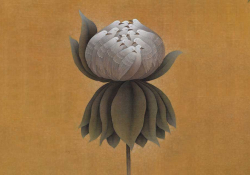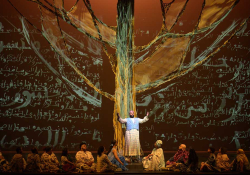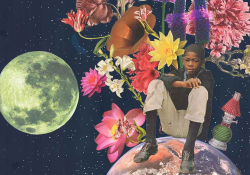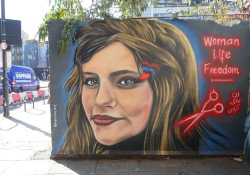The Japanese Shoegaze Revival
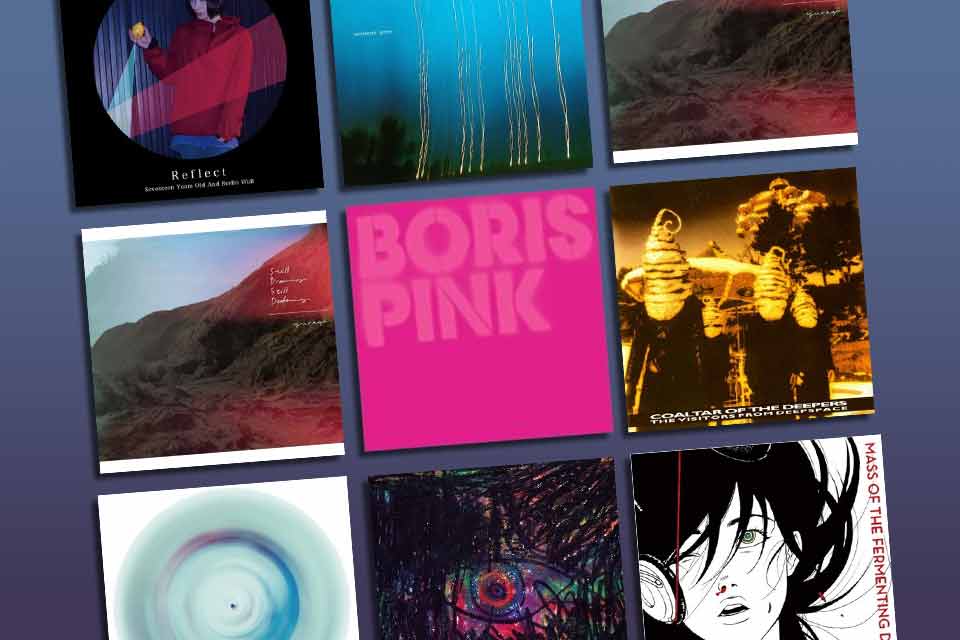
The burgeoning shoegaze movement in the United Kingdom and Ireland of the late 1980s caught the world by surprise; at the height of grunge’s popularity, a sonically opposed and ethereal soundscape emerged and carved its own mark on underground music. This dense, wall-of-sound genre has been best defined by My Bloody Valentine’s nominal Loveless (1991), Ride’s Nowhere (1990), and Slowdive’s Souvlaki (1993),among a long list of disputed pioneers. The term “shoegaze” itself originates from the way musicians would stare down at their numerous effects pedals during performances. Initially unpopular and derided by critics for its lack of showmanship and an unorthodox style, a new, modern shoegaze revival has begun in an unexpected region of the world: East Asia.
The sweltering rush of musicians through Tokyo’s many venues has led to a confluence of musical ideas, genres, and productions. Performers line the streets of Shibuya and surrounding areas, each eager to display their musical ingenuity. Koenji High, a venue just northwest of Shibuya, features a rotating cast of innovative artists, which often fall under the shoegaze label. The prevalence of bedroom pop and alternative rock within popular Japanese media helped to foster a space for this once niche but now widespread style. This shoegaze revival is not restricted to Japan, however. China and South Korea both possess bustling scenes, with Seoul, Beijing, and Tokyo serving as the three main hubs for shoegaze in East Asia.
Japanese shoegaze started on the heavier side in the late 1990s and early 2000s, with Coaltar of the Deepers and Boris merging the wall-of-sound style for which shoegaze is best known together with metal and hard rock. Sometimes sludgy, dark, and thrashy, these groups have experimented with and pushed shoegaze to its extremes. The former group is regarded as one of the pioneering Japanese shoegaze bands, along with Cruyff in the Bedroom and Luminous Orange. Formed in 1991, Coaltar of the Deepers released their first full-length album, The Visitors from Deepspace, in 1994. Alternating between softer, melodious tracks and brutal thrash metal, The Visitors from Deepspace is an often overlooked but important release. The debut was a mix of genres; some tracks bear little resemblance to shoegaze and sound more like thrash metal, but “Snow” could not be categorized in any other way but shoegaze. In 2021 they released a rerecording of the album, titled Revenge of the Visitors. Coaltar of the Deepers continue to remain active, although releases are few and far between. Their influence is far-reaching, with many bands crediting them as originators of Japanese shoegaze and the ones responsible for popularizing it in Tokyo’s music circles.
Coaltar of the Deepers is regarded as one of the pioneering Japanese shoegaze bands.
More akin to Hum and Deftones, Boris pushed a sludgy, thicker metal sound than most shoegaze bands would lean toward. Even calling them a shoegaze band is a stretch, but they undeniably shaped the development of Japan’s alternative rock/metal industry and subsequently shoegaze. Sludge metal, which Boris could be more accurately categorized under (although they have experimented with a diverse range of genres), is also notorious for a wall-of-sound but a harsh, unforgiving one rather than an ethereal, dreamlike one. In Boris’s albums, the vocals are usually drowned out in the mix, held under by the immense weight of the guitars. Named after a song by the Melvins, Boris was formed in 1992 but debuted in 1996 with the sludgy and ambient Absolutego. Their most influential albums were Pink (2006), Akuma No Uta (2003), and Boris at Last – Feedbacker (2003). Revered by both Western and Eastern audiences, Boris are essential to understanding Japanese shoegaze’s development; without them, it is unlikely it would look anything like it does today.
Originally an all-female group, Mass of the Fermenting Dregs (commonly referred to as Masu Dore) formed in 2002 in Kobe, Japan. Natsuko Miyamoto, the vocalist and bassist of Masu Dore, has remained the sole founding member throughout the band’s history. Their sound draws heavily on post-hardcore groups including NUMBER GIRL and 9mm Parabellum Bullet. Despite this, their music is inseparable from shoegaze. Extremely energetic and youthful, tracks like “Aoi, Koi Daidaiiro No Hi” and “Kono Speed No Saki e” are bass-driven and lush, keeping the tempo flowing forward constantly. Miyamoto’s basslines and vocals are wonderfully paired, with her dynamic performances stirring up and engaging audiences from around the world. An upload on YouTube of the album World Is Yours (2009) by the channel Meta Beats garnered millions of views within a month in late 2020. This widespread attention from the West was a surprise and introduced many listeners to other bands like KinokoTeikoku and Yuragi, both of which have also benefited immensely from YouTube uploads of their albums.
KinokoTeikoku and Yuragi have benefited immensely from YouTube uploads of their albums.
Osaka-based Yuragi, composed of members Mirai Akita, Kantaro Kometani, Yusuke Suzuki, and Yusei Yoshida, stand out as an up-and-coming giant in Tokyo’s diverse music scene. Their first two EPs, nightlife (2016) and Still Dreaming, Still Deafening (2018), feature warm, delicate guitars overlayed with smooth, lustrous vocals that utilize elements of both dream pop and shoegaze. Once a hidden gem, Yuragi unexpectedly surged in popularity due to a YouTube upload of one of their albums. An interesting feature of Yuragi that may have contributed to their popularity online: the majority of their lyrics are in English. While not necessarily unusual for an artist to perform in English rather than their native language, this may be indicative of the audience that is consuming their music. Yuragi reached widespread notoriety among Western audiences, along with artists Mass of the Fermenting Dregs and KinokoTeikoku. In 2025 they released In Your Languages, a gentle, melodious album that envelops the listener in a warm soundscape and experiments with a more vocally driven style.
Gaining much attention from fans, KinokoTeikoku’s Eureka is arguably the cornerstone of Japan’s shoegaze. Originally from Tokyo, KinokoTeikoku released their first album, Uzu ni Naru, in 2012 and followed up the next year with their magnum opus, Eureka. The title track is reminiscent of Boris, with guitars shrieking and building while the bass and drums ominously call and respond to each other. The energetic yet melancholy vocals of Chiaki Sato instill a sense of wasted youth, regret, and complacent sadness. Conversely, the rest of the album is much more subdued and melancholy. “Musician” elicits eternal longing, with a somber, unchanging riff permeating the entire song. Every track on this record is remarkable, with a rich atmosphere and even more stellar live performances.
KinokoTeikoku’s Eureka is arguably the cornerstone of Japan’s shoegaze.
To the dismay of many fans, KinokoTeikoku shifted more toward pop music in their later years. Fake World Wonderland (2014), Neko To Allergie (2015), and Timelapse (2018) are better described as dream pop records rather than shoegaze. KinokoTeikoku disbanded in 2019 when their bassist, Shigeaki Taniguchi, returned to work for his family business. Chiaki Sato continues to perform under her own name and now creates pop music, but the underlying remnants of KinokoTeikoku’s style can still be uncovered in her work.
The modern Japanese shoegaze revival can best be characterized as a larger musical shift; the resurrection of retro aesthetics, predominantly of the late 1980s and early ’90s, is largely responsible for Japanese youth’s fascination with shoegaze. Modern Japanese shoegaze is changing, deriving features from other genres, media, and otherwise unrelated mediums. Some artists, like Coaltar of the Deepers and Boris, have explored the way shoegaze can blend with rock and metal. Conversely, artists such as Yuragi, KinokoTeikoku, and Mass of the Fermenting Dregs have pushed more toward dream pop. Western audiences have been drawn to this emergence of shoegaze through popular social media including TikTok and YouTube; here, channels featuring Japanese shoegaze have contributed to spreading up-and-coming artists’ music to distant regions.
The resurrection of retro aesthetics is largely responsible for Japanese youth’s fascination with shoegaze.
Pure shoegaze as performed by My Bloody Valentine and Slowdive is a rarity in this era; often, it has blended with another style and adapted to cater to a new generation. Whether dream pop, post-hardcore, sludge metal, alternative rock, or another genre, Japanese shoegaze has tended to combine and form new sounds throughout its evolution. Remarkably, few of the artists featured here have discussed regularly listening to shoegaze or credit shoegaze artists as inspirations; the majority listened to rock or metal growing up and have little association with or knowledge of shoegaze outside of Japan. Japanese shoegaze is a hybrid genre, one born with little direct lineage to Kevin Shields’s ear-shattering riffs or Rachel Goswell’s tranquil lyricism. Rather, Japanese artists have produced these sounds organically, with many claiming to rarely listen to music outside of Japan. Such a phenomenon in East Asia has been further complicated by social media, which has eroded the lines between genres and the traditional paths by which people would discover music. Western audiences have more means than ever to discover this style of music, with less incentive to understand the origins or defining features of it. Regardless, huge musical movements are occurring in East Asia, and we are witnessing the birth of a modern shoegaze revival—one distanced both geographically and culturally from its origins.
University of Oklahoma





